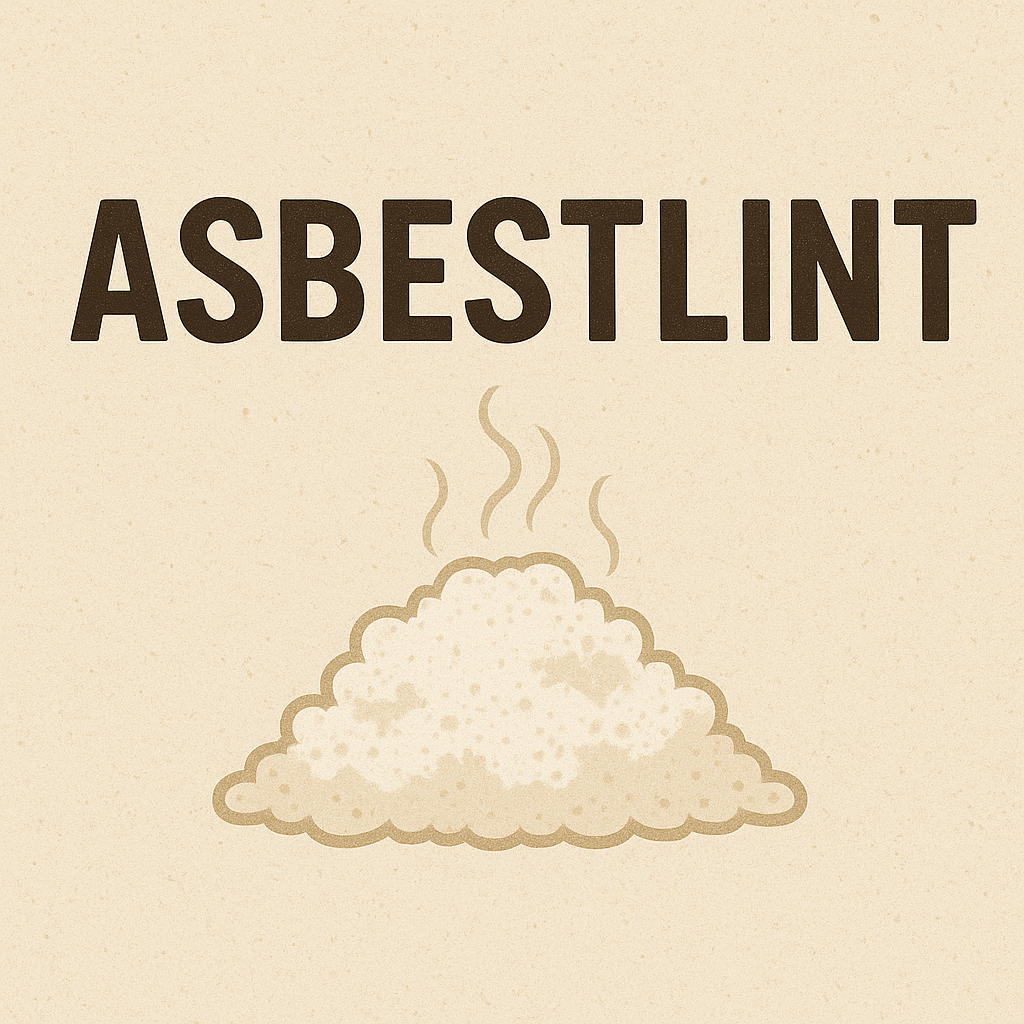Asbestlint: What It Is, Why It’s Dangerous, and How to Stay Safe
The word “Asbestlint” can mean two different things. Some people use it to describe tiny asbestos dust particles that look like lint. Others use it to mean asbestos tape, a woven material once used to cover and seal pipes or ducts.
Both types are linked to asbestos, a mineral once called a “miracle material” because it resisted heat, fire, and wear. But today, asbestos is known as a serious health hazard. Breathing in asbestos fibers can cause deadly diseases many years later.
This article explains what asbestlint is, where it was used, what dangers it brings, how to recognize it, and how to deal with it safely.
What Is Asbestlint?
1. Asbestlint as Dust
-
Tiny, invisible fibers released when asbestos products break down.
-
Found in old insulation, tiles, pipes, boilers, and heating systems.
-
Can float in the air and get into the lungs easily.
2. Asbestlint as Tape
-
Strips of woven asbestos fiber.
-
Wrapped around pipes, ducts, and electrical parts.
-
Used in homes, factories, ships, and planes between the 1930s and 1970s.
Read also: Mental Health and Addiction
Where Was Asbestlint Used?
| Form | How It Was Used | Where You Might Find It | Time Period |
|---|---|---|---|
| Dust | Came from crumbling asbestos products | Attics, basements, boilers, ceiling panels, HVAC systems | 1900s–1980s |
| Tape | Insulated and sealed pipes, ducts, wires | Old houses, factories, ships, aerospace equipment | 1930s–1970s |
Health Dangers of Asbestlint
Asbestos exposure is dangerous even in small amounts. Breathing in fibers can cause:
-
Asbestosis – scarring in the lungs, making it hard to breathe.
-
Mesothelioma – a rare, aggressive cancer of the lungs or abdomen.
-
Lung Cancer – higher risk if the person also smokes.
-
Pleural problems – thickening of the lung lining or fluid buildup.
Why It’s a Hidden Danger
-
Invisible: You cannot see or smell asbestos fibers.
-
Slow to show up: Illness may appear 20–50 years after exposure.
-
Builds up over time: Repeated small exposures are just as harmful as one big exposure.
How to Spot Asbestlint
Dust
-
May look like regular dust or powder near old building materials.
-
Common near boilers, ceiling panels, or heating ducts.
-
Only lab testing can confirm if it’s asbestos.
Tape
-
Looks like woven cloth wrapped around pipes or joints.
-
May be frayed, brittle, or falling apart with age.
-
Often hidden under paint or other coverings.
How People Get Exposed
-
Construction or demolition: Cutting, drilling, or sanding old materials.
-
Old tape breaking down: Fibers shed and float in the air.
-
Airflow or vibrations: HVAC systems or movement in buildings spread fibers.
Rules and Laws About Asbestlint
| Organization | Area | What They Do |
|---|---|---|
| OSHA | U.S. workplaces | Limits worker exposure and requires protective gear. |
| EPA | U.S. buildings/environment | Sets rules for schools, public buildings, and asbestos disposal. |
| EU Directives | European Union | Bans asbestos products and sets strict removal rules. |
| Other Local Rules | Worldwide | Some countries have bans, others have partial limits. |
How to Handle Asbestlint Safely
General Safety
-
Do not touch or disturb old materials you think contain asbestos.
-
Call a professional to inspect or test suspicious materials.
-
Never try DIY removal without training and safety equipment.
Ways Professionals Manage It
-
Encapsulation – sealing asbestos materials with special coatings.
-
Enclosure – covering asbestos materials with barriers.
-
Removal – complete elimination, but risky and must be done by licensed experts.
Safety Gear (PPE)
-
Respirators with HEPA filters.
-
Disposable suits, gloves, and shoe covers.
-
Sealed work areas with special vacuums.
Safer Alternatives Today
| Modern Material | What It Replaces | Benefits |
|---|---|---|
| Fiberglass Tape | Asbestos tape | Heat-resistant, safe, affordable. |
| Mineral Wool | Pipe and building insulation | Fireproof, durable, safe to use. |
| Silicone Wraps | Pipe and duct sealing | Flexible, long-lasting. |
| Ceramic Fibers | Industrial insulation | Works at very high temperatures. |
Why Awareness Still Matters
Even though asbestos is banned or restricted in many countries, it’s still present in millions of older buildings.
-
Home renovations: DIY projects can unknowingly disturb asbestos.
-
Workplace exposure: Construction, demolition, and maintenance workers face ongoing risks.
-
Public health: Without awareness, people may not recognize danger until it’s too late.
Key Points to Remember
-
Asbestlint means either asbestos dust or asbestos tape.
-
Both forms can cause deadly diseases when fibers are inhaled.
-
Do not disturb suspected materials — always test and confirm first.
-
Only trained professionals should remove or seal asbestos.
-
Modern materials like fiberglass and mineral wool are safe alternatives.
Conclusion
Asbestlint shows two sides of the same problem: asbestos. As dust, it floats unseen in the air. As tape, it hides on old pipes and ducts. Both forms are dangerous if disturbed.
By understanding what asbestlint is, where it’s found, and how to manage it, we can protect ourselves and others from serious health risks. With strict rules, professional handling, and safe modern materials, the dangers of asbestos can finally become part of the past.

